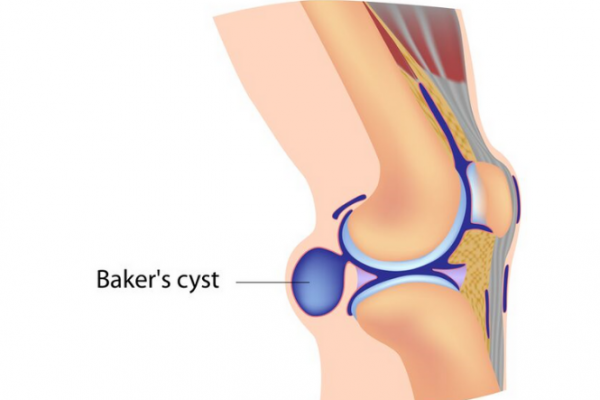Baker’s cyst is a fluid-filled swelling that can develop behind your knee. It is usually caused by a problem in your knee, such as arthritis or a cartilage tear. With these conditions your knee can make too much fluid (synovial fluid) which then collects behind your knee.
Baker’s cysts are more common in women and usually develop in people over the age of 40. Rarely, children and younger people with a healthy knee can get a Baker’s cyst.







